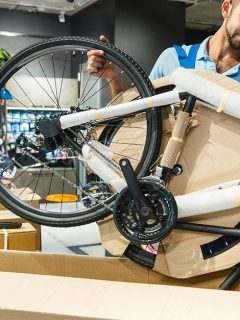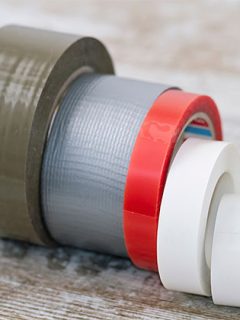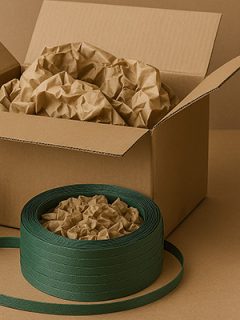Fiery lines to your sweetheart, secret business correspondence, a large bill or simply the last pay slip: if envelopes could tell stories about their contents, they could fill entire novels. Even if e-mail and other media have long since overtaken traditional mail in some respects, Europeans remain loyal to letter post: according to the statistics portal statista, Deutsche Post carried around 17.4 billion letters in 2019. Although the numbers are falling every year, this is still a remarkable figure. Folding, rolling up or sealing all these envelopes – as was common in earlier times – would probably leave no time at all for anything else. Various standards for envelopes and their formats have made it possible to sort mail by machine.
Did you already know?
The beginnings of the envelope can be found in Brighton almost 200 years ago: there, the book and stationery merchant S.K. Brewer cut the world's first envelopes with the help of tin stencils in 1820. Today, envelopes are a mass product; in the meantime, 1,600 envelopes per minute can be produced with special envelope-making machines.The DIN formats for envelope size
We have already explained how much the DIN paper formats, defined in DIN 476, make our lives easier in the article on DIN paper formats. These paper formats also form the basis for the standard sizes of envelopes defined in DIN 678 and ISO 269. The standard is intended to limit the choice of possible formats in order to simplify mail traffic and thus also the automated logistics, sorting and distribution of envelopes by the postal service. The paper format series DIN B and DIN C are intended for envelopes. In addition, there are of course numerous special formats, such as square envelopes or oversized envelopes.The DIN C series formats are most commonly used for envelopes and mailing bags. In these envelopes and pockets, DIN A formats find enough space to be sent by post in a cost- and space-saving way. In addition, almost all mailboxes can hold envelopes up to DIN C4 format (sometimes even DIN B4) without the envelope having to be folded. Of course, the standard letterbox opening is also standardised (DIN EN 13724).
Envelope: Different formats
| What | Dimensions | suitable for | Tariff Deutsche Post |
| DIN C6 | 16,2 x 11,4 cm |
|
Standard letter, compact letter |
| DIN long (C5/6) DIN long+ (C6/5) | 11 x 22 cm 11.4 x 22.9 cm |
|
Standard letter Compact letter |
| DIN C5 DIN B5 | 16.2 x 22.9 cm 17.6 x 25 cm |
|
Standard letter Compact letter Large letter Maxi letter (depending on weight) |
| DIN C4 DIN B4 | 22.9 x 32.4 cm 23.5 x 35.3 cm |
|
Large letter Maxi letter |
The right envelope format
To help you choose the right envelope, we have listed the standard sizes from ISO269 and DIN678 in the table and added the respective postage format of Deutsche Post. The choice of the correct postage format (standard, compact, maxi or large letter) depends on the weight and size of the letter. The current postage prices are available on the Deutsche Post website.The types of closure for envelopes
To ensure that nothing goes wrong when sending a letter, the envelope must of course be sealed. There are different types of seals depending on your needs. It is important to pay attention to the durability of the adhesive.Labeling letters correctly
For letters without a window, the rule of thumb is to place the stamp in the top right-hand corner of the envelope, with the recipient’s address also on the right-hand side, below the stamp. The sender’s address is in the top left-hand corner. A margin of about 1.5 centimetres should be left on the left, right and bottom. If you want to be sure to do everything right, you can get information directly from Deutsche Post, which describes online how to address the letter correctly, both nationally and internationally.The business letter
And while we are on the subject of standards: There are rules for writing business letters, too. After all, the letter must fit perfectly into the envelope with window. DIN 5008 lays down the rules for writing and designing business letters. Among other things, it includes the size and position of the letterhead, address field and fold mark. A distinction is made between business letter template A with a small letterhead and business letter template B with an extended letterhead. The difference lies in the available size for the letterhead. Type B has more space for logos and information about the sender than type A.Envelopes
With high mail volumes, time-saving inserting processes for the sender make a significant contribution to increasing efficiency. One possibility is offered by inserting machines. Such a machine can be used to prepare cover letters, mailings, invoices, etc. for dispatch. Depending on the model, documents are collected, folded, inserted into the envelope and sealed by machine.
Of course, this requires special envelopes that are automatically filled with contents. These inserting envelopes offer optimal running characteristics for the inserter. Large quantities are processed automatically within a short time. The special side flap gluing ensures that the envelope does not open sideways during letter transport. The particularly close-edge gluing also prevents the envelopes from snagging inside the inserter and thus interrupting the inserting process.
The window film is also glued very close to the edge. This ensures that the letter does not get caught in the envelope during the inserting process and thus cause the machine to stop.
Optimised glue application (dosage and consistency) on the sealing flap ensures that the envelope can be sealed quickly and securely after moistening. The format accuracy of the envelopes also plays an important role in processing with inserting machines. A consistent format both in terms of squareness and length and width are important for trouble-free inserting operation.
Due to these important quality features, it is necessary to monitor the production process. With our envelope inserters, this is monitored by means of high-speed cameras. This means that every single envelope is checked “inline”.
The envelope is the original postal packaging. And although the letter has been predicted to be extinct for years, it still exists. A real success model 🙂














